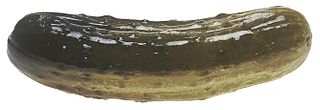If you look at some of the biggest technology companies in the world, from Google and Facebook to hardware companies like Dell or even biotech unicorns like Oxford’s own Oxford Nanopore, all of them started on university campuses. If you are a researcher interested in finding out how to make the first steps to commercialise your research here is a quick guide:
Continue readingCategory Archives: Hints and Tips
Peer Review: reviewing as an early career researcher
Peer review is an important component of academic research and publishing, but it can feel like an opaque process, especially for those not directly involved. I am very fortunate to have been able to participate in the peer review of multiple papers, despite being very early in my career, through support from my supervisors and a mentoring program run by Sense about Science with Nature Communications. Here are some of the things I have learned.
Continue readingTo Pickle, Or Not To Pickle? — Quickle!
Pickling in Python can be dangerous.

That’s where Quickle comes in — as long as you’re using Python 3.8 or later…
Making Pretty Pictures with PyMOL
There’s few things I like more in our field than the opportunity to make a really nice image of a protein structure. Don’t judge me, but I’ve been known to spend the occasional evening in front of the TV with a cup of tea and PyMOL open in front of me! I’ve presented on the subject at a couple of our research group retreats, and have wanted to type it up into a blog post for a while – and this is the last opportunity I will have, since I will be leaving in just a few weeks time, after nearly eight years (!) as an OPIGlet. So, here goes – my tips and tricks for making pretty pictures with PyMOL!

Ray Tracing
set ray_trace_mode, number
I always ray trace my images to make them higher quality. It can take a while for large proteins, but it’s always worth it! My favourite setting is 1, but 3 can be fun to make things a bit more cartoon-ish.
You can also improve the quality of the image by increasing the ‘surface_quality’ and ‘cartoon_sampling’ settings.
BioDataScience101: a fantastic initiative to learn bioinformatics and data science
Last Wednesday, I was fortunate enough to be invited as a guest lecturer to the 3rd BioDataScience101 workshop, an initiative spearheaded by Paolo Marcatili, Professor of Bioinformatics at the Technical University of Denmark (DTU). This session, on amino acid sequence analysis applied to both proteomics and antibody drug discovery, was designed and organised by OPIG’s very own Tobias Olsen.
Continue readingEnhance your presentation by using virtual webcams and scene transitions
If you haven’t checked out Matt’s post on using OBS for recording video, I highly recommend doing so. OBS is a terrific way to present your work online. It can provide (amongst many, many other things) the ability to create live picture-in-picture scenes, so you can move through your powerpoint deck whilst overlaying video of your tiny talking head in the corner.
Continuing on from Matt’s post, I’d like to promote the OBS virtual camera plugin and Touch Portal.
Every company, department or course has its own favourite video conferencing application and whilst they all have their strengths, consistency is not one of them. If you want to consistently display your presentation and your live video regardless of the platform in use, this quickly gets into the “messy” territory. This is where the virtual camera comes in.
Graphical abstracts that spark joy on a gloomy day
Have you ever read a paper just because it had a funny, endearing, or utterly bizarre graphical abstract? Ever since a colleague showed me the ‘Graphical abstracts that I gone and found’ Facebook page, I have definitely come across a few, and I thought I would share some of my favourite ones below. If you enjoy this kind of thing, I strongly suggest visiting their page for more – it makes for a wonderful distraction from pretty much anything. Continue reading
Using Python in PyMOL
Decades later, we owe Warren DeLano and his commitment to open source a great debt. Warren wrote PyMOL, an amazingly powerful and popular molecular visualization tool, but it has many hidden talents.
Perhaps its greatest strength is the use of the open source language, Python, as its control language.
Continue readingBuilding More Useful Bash Scripts
If there is some set of keystrokes that you find yourself using day in, day out, you can almost certainly write something that can automate the process. This could be something simple that could be achieved by putting a bash alias somewhere in your ~/.bashrc:
A new Graduate students (unexperienced) guide to academic literature.
Given this is my first ever attempt at a blog post, let alone one on such a highly regarded platform I feel it’s proper that I introduce myself. Hi, my name is Maranga, I am a second-year SABS student starting my DPhil project in Small molecules, and honestly, I really don’t like reading. Especially, scientific journals. Now I can appreciate this does not bode well given my chosen career path, however, my aversion for reading is not new (shoutout to Biff, Chip and Kipper) and hopefully not permanent.
Continue reading